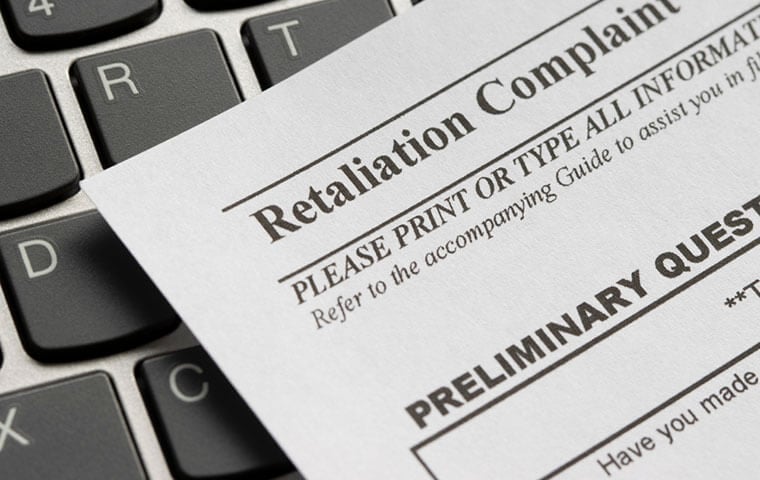 Retaliating against an employee for filing an EEO complaint, while illegal, can have a chilling effect. Image: Tada Images/Shutterstock.com
By: FEDweek Staff
Retaliating against an employee for filing an EEO complaint, while illegal, can have a chilling effect. Image: Tada Images/Shutterstock.com
By: FEDweek StaffFollowing is the section of a recent MSPB publication focusing on the reasons behind the low rates of formal complaints filed by federal employees who experience sexual harassment that it reported in a recent study.
When Federal employees feel they have been subjected to sexual harassment, there are a number of actions they can take to respond. As discussed in MSPB’s new report, Sexual Harassment in Federal Workplaces: Understanding and Addressing the Problem, responses to MSPB’s 2016 Merit Principles Survey (MPS) found that only 11 percent of Federal employees who experienced one or more sexual harassment behaviors responded by filing a formal equal employment opportunity (EEO) complaint. There are several possible reasons for this that deserve further consideration to ensure that any incidents of sexual harassment will be promptly and appropriately addressed.
Fear of retaliation. In response to the MPS, only one-third of women and one-third of men who filed an EEO complaint related to sexual harassment said that it improved the situation, and 31 percent of the women and 40 percent of the men said that it worsened the situation. This gap between women and men may be partly due to misconceptions around who may be targeted by sexual harassment and how they should respond. Further, while retaliating against an employee for filing an EEO complaint or grievance is illegal, this prohibition does not always prevent it from occurring. Employees may also fear negative reactions from coworkers.
Concerns regarding the EEO complaint process. Although the majority (81 percent) of Federal employees indicated that they were familiar with formal complaint channels, only 60 percent were confident that a charge of sexual harassment would be resolved fairly and justly. Further, as noted in the Equal Employment Opportunity Commission’s (EEOC) Annual Report on the Federal Workforce for Fiscal Year 2019, the Governmentwide average length of time from filing a formal complaint to selected milestones were:
Filing to completed investigation: 227 days;
Filing to closure: 587 days;
Filing to final orders fully implementing decisions by an EEOC Administrative Judge: 1,000 days.
These lengthy time frames mean that an employee may continue to suffer harassment for an extended period before obtaining a resolution.
Attempts to resolve the situation. Although the percentage of employees who file EEO complaints in response to sexual harassment appears relatively low, another common explanation is that employees who have experienced or observed sexual harassment are able to report, if not resolve, the situation through direct action. For instance, almost 60 percent of respondents reported asking the harasser to stop, and about a third reported the behavior to a supervisor or other officials who intervened.
Although preventing sexual harassment from occurring in the first place is the ultimate goal, stopping it as soon as it occurs is critical to reaching that goal. Federal agencies should also ensure that Federal employees have timely, effective, and trusted alternatives to address sexual harassment when these initial efforts fail or are insufficient to remedy the problem.
OPM Details Coverage Changes, Plan Dropouts for FEHB/PSHB in 2026
Does My FEHB/PSHB Plan Stack Up? Here’s How to Tell
2025 TSP Rollercoaster and the G Fund Merry-go-Round
5 Steps to Protect Your Federal Job During the Shutdown
Primer: Early out, buyout, reduction in force (RIF)
See also,
OPM Guidance Addresses Pay Issues arising During, After Shutdown

